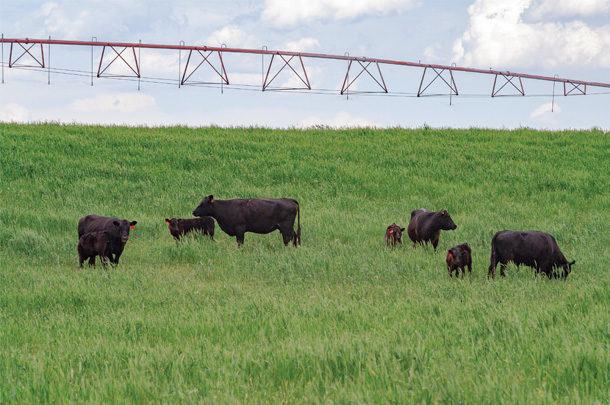Optimizing net return from pasture integrates forage and animal production, cost control and marketing. This task is relatively easy to accomplish when the manager understands the biology and economics. Optimizing management produces the highest net return.
Forage and animal production differs from farm to farm due to soil productivity and forage and livestock management. Forage utilization impacts animal performance and is often described as stocking rate or animals per acre. At a low stocking rate, there is abundant forage per animal and animal gain per head (GPH) is high. However, animal gain per acre (GPA) is low since there are few animals on the pasture.
As stocking rate increases, GPH decreases as forage is shared among more animals, but GPA increases (Figure 1).

As stocking rate increases, GPH decreases and GPA increases until it plateaus then decreases. As stocking rate increases, available forage is shared between more animals, each animal has less to eat and gains less weight. At a low stocking rate, the gain on the next animal added to the pasture is greater than the reduced GPH from animals on the pasture, so total GPA increases. At a low stocking rate, forage may be wasted. At a high stocking rate, competition for available forage reduces animal performance.
Finding the optimal rate
The optimal stocking rate is a function of forage productivity, animal performance, the value of animal production and variable cost. Between 1989 and 2017, the value per head for steer feeder calves in West Virginia equaled a base value of $269 plus 97 cents per pound live weight (adjusted to 2017 dollars). The value per head of heifer calves averaged 0.88 times the value of steers in the same weight class (Table 1).

Here is an example of optimizing the stocking rate for a cow-calf herd in West Virginia. The cow herd on this 90-acre farm was reduced from 40 to 20 head due to a major drought. Over the next four years, the herd was built back up using heifers produced from the herd. After weaning, heifer calves were raised on another farm and were not part of the stocking rate. Bred heifers returned to the farm in the fall before having their first calf. Cull cows were removed from the farm when bred heifers returned. Calves were sired by one bull for three years and a bull with similar EPDs in the fourth year. The 90 acres provided all the pasture and hay for the herd. Protein supplements for the cows and energy supplements fed to calves during a 42-day preconditioning before sale were purchased.
Calf sale weight was plotted against cow-calf pair stocking rate using Microsoft Excel. In Excel, the linear trend between stocking rate and GPH was determined. The product of GPH time stocking rate gives GPA (Table 2).

For this farm and herd, over four years calf sale weight decreased as stocking rate increased, equaling 854 pounds minus 9.85 times stocking rate. The highest GPA occurs at a stocking rate of 40 cows producing 460-pound calves (Table 2). This was the pre-drought stocking rate.
Using a $600 cost per cow, we calculate the effect of stocking rate on net income and find that the optimal stocking rate is 25 cows. If the farm were stocked at 20 cow-calf pairs, net income would be reduced by only 3% – a small price to pay for extra forage to get through dry years. Cash cost per cow has a major impact on the optimal stocking rate. When cash cost per cow-calf pair decreases to $500, the economic stocking rate increases to 30. When it decreases to $400, the economic stocking rate increases to 35.
Summary
Producers ask, “How do I know if my stocking rate is near optimal without doing the research on my farm?” The stocking rate is near optimum when pasture is the primary feed and cows at the beginning of winter feeding and at calving are in a body condition score 6. Under continuous stocking, the manager can maintain a pasture forage mass of about 1,200 pounds dry matter (DM) per acre (forage height of 3 to 4 inches). Under rotational stocking, the manager needs to maintain an initial forage mass between 2,000 and 3,000 pounds DM per acre (forage height 8 to 12 inches) and graze the pastures to a residual forage mass of 800 pounds DM per acre (2 inches) for dry mature cows and when managing for legumes in cool weather to 1,200 pounds DM per acre (3 to 4 inches) when finishing steers or for high-milk-producing cows at peak milk prior to breeding.
Cattle producers like having a lot of cows. They also like selling large calves. Optimizing the stocking rate enables the producer to find the number of cows and the size of calf that maximizes net income over time to pay for owning and managing cattle.









